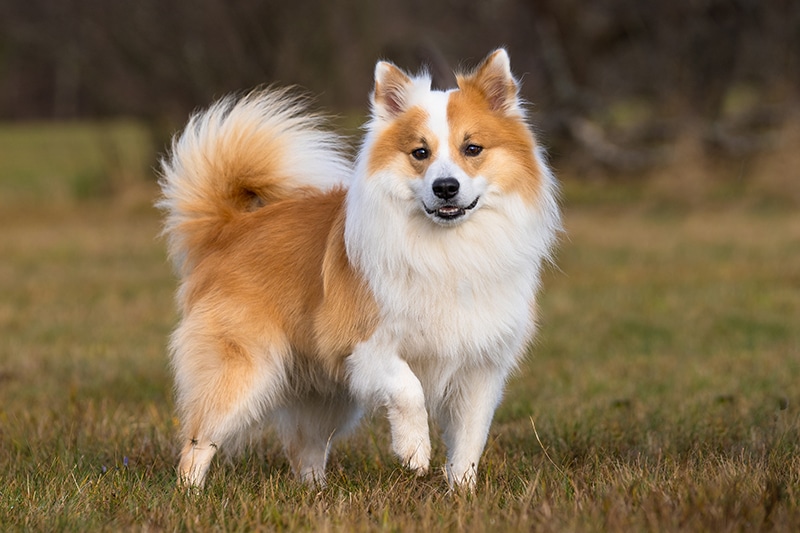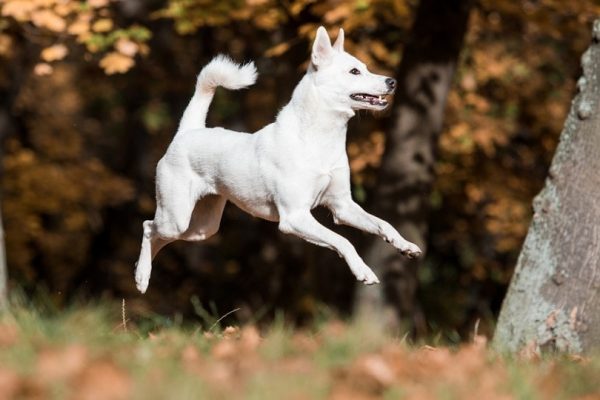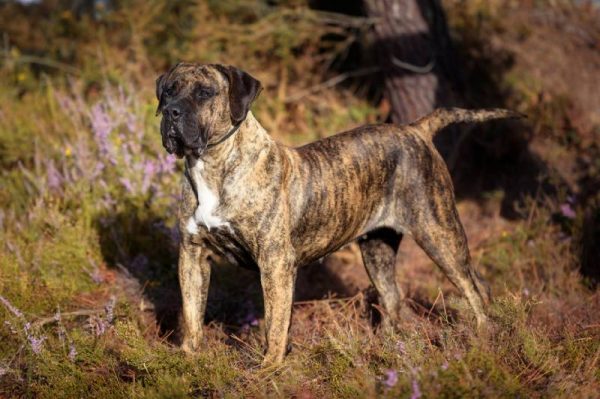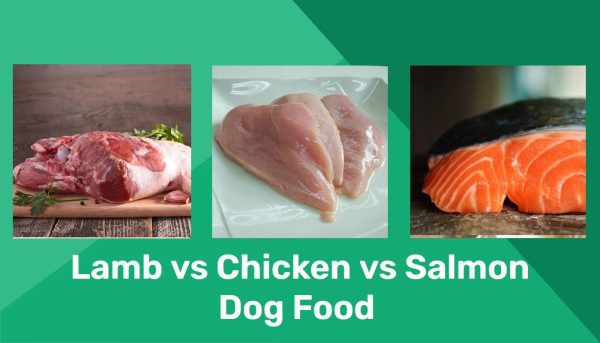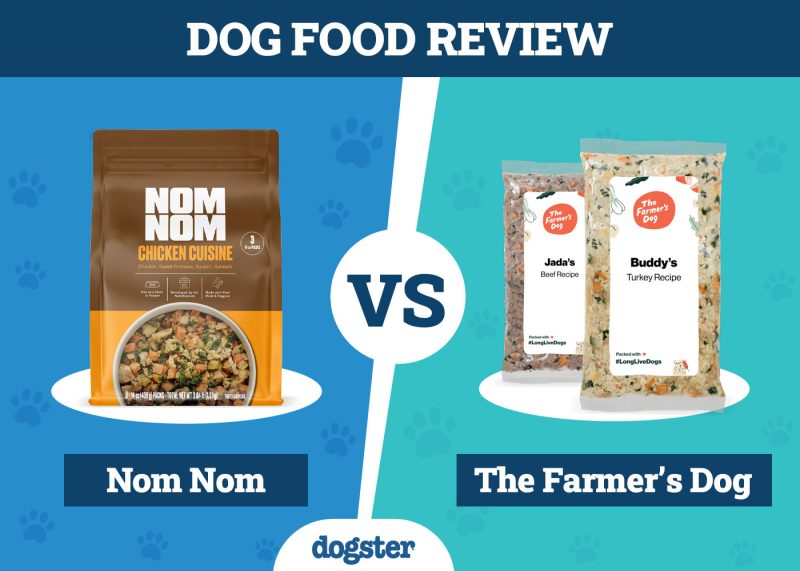In this article
View 8 More +The Icelandic Sheepdog is a spitz-type breed whose ancestors first made their way to Iceland by sea about 1,100 years ago with Norse settlers. Today, they are considered cultural icons in their native country and though rare, they continue to generate intrigue among dog lovers. More Icelandic Sheepdogs than ever before are finding homes in the U.S. and European countries outside Iceland.
We’re sure you’re curious about this rare Nordic beauty, so let’s take a closer look at the Icelandic Sheepdog.
Breed Overview
Height:
16.5–18 inches
Weight:
25–30 pounds
Lifespan:
12–14 years
Colors:
Black & white, red & white, cream & white, gold & white, gray & white, sable & white, tan & white, white tan & black, chocolate & white, fawn & white, and more
Suitable for:
Loving caregivers who enjoy spending lots of time with their pooch
Temperament:
Affectionate, dignified, playful, devoted, strong-willedFriendly, devoted, affectionate, playful, merry
The Icelandic Sheepdog’s “smiley” expression and cheerful, devoted nature are sure to melt hearts everywhere. Their physical characteristics are those typical of spitz types and include pointed ears, a slender muzzle, a dense double coat, and a bushy, curled-over tail, all of which contribute to an overall foxy look. Other spitz-type breeds include the Pomeranian, Akita, Chow Chow, Siberian Husky, and many more.
Icelandic Sheepdog Characteristics

Icelandic Sheepdog Puppies
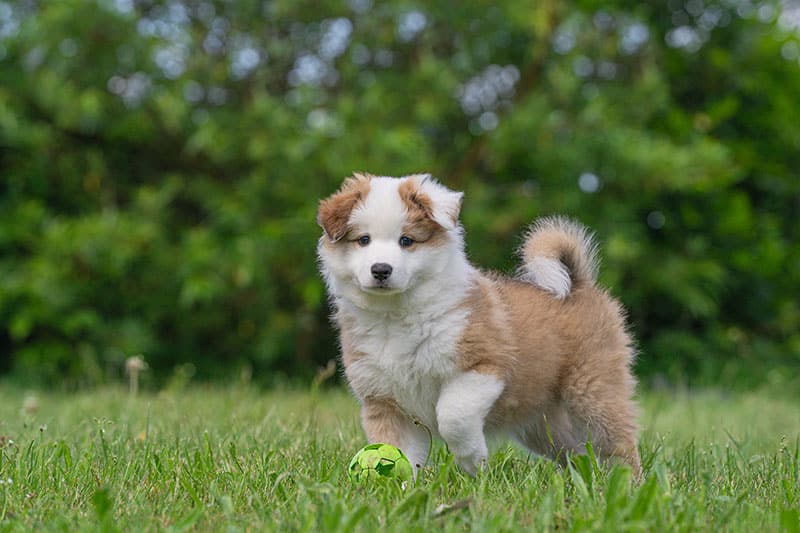
Though not the most common breed (only around 100 puppies are born annually in Iceland), some professional breeders produce Icelandic Sheepdogs in the United States. While we’re advocates for adoption wherever possible, it may be tricky to find an Icelandic Sheepdog for adoption due to their rarity, but you never know.
If you’re not dead set on an Icelandic Sheepdog, you might want to consider reaching out to shelters about the possibility of adopting another spitz-type dog, of which there are about 50 types. If, however, you are determined to parent an Icelandic Sheepdog specifically, make sure you liaise only with a well-known Icelandic Sheepdog breeder with an ironclad reputation.
As puppies, Icelandic Sheepdogs are in the best position to learn good habits. Bear in mind that puppies are a huge commitment not only because you have to socialize and train them, but also because they have various needs that must be fulfilled in terms of things like vaccinations, nutrition, bathroom needs (puppies pee a lot), and more.

Temperament & Intelligence of the Icelandic Sheepdog
Icelandic Sheepdogs are famous for possessing a wonderful temperament. No two dogs are the same personality-wise even if they’re of the same breed, but generally, well-socialized Icelandic Sheepdogs are said to be very affectionate, friendly, upbeat, and just a joy to spend time with. These dogs are also noted for their intelligence and trainability, traits passed down by their sheep and pony-herding ancestors.
Another trait the Icelandic Sheepdog has inherited is the tendency to be vocal, a common characteristic of spitz breeds. This doesn’t just mean barking, either—your Icelandic Sheepdog may hold a full back-and-forth “conversation” with you using a variety of vocalizations!
Are These Dogs Good for Families? 👪
As extraverted and affectionate dogs, Icelandic Sheepdogs thrive on the companionship of their families, including families with respectful children. An Icelandic Sheepdog will expect to be very much a part of your world and are sure to be hurt if they’re made to feel as if they are not, so they do well with loving families that are happy to spend time with them.
Does This Breed Get Along with Other Pets? 🐶 😽
The Icelandic Sheepdog is typically a happy and sociable soul and, when properly socialized, adapts well to life with other furry beings. When you bring a dog home, keep the atmosphere calm and as routine as possible to reduce stress on your other animal companions. Separating your new dog from your resident pet while they get used to each other’s scent is a good way to make slow and steady introductions.
Some animals meet one another and quickly feel relaxed in each other’s company, but some need more time. Depending on the personalities of your fluffy friends, you may need to make use of a pet gate or screen door to do the first face-to-face introductions. It’s also best to leash dogs when they first meet.
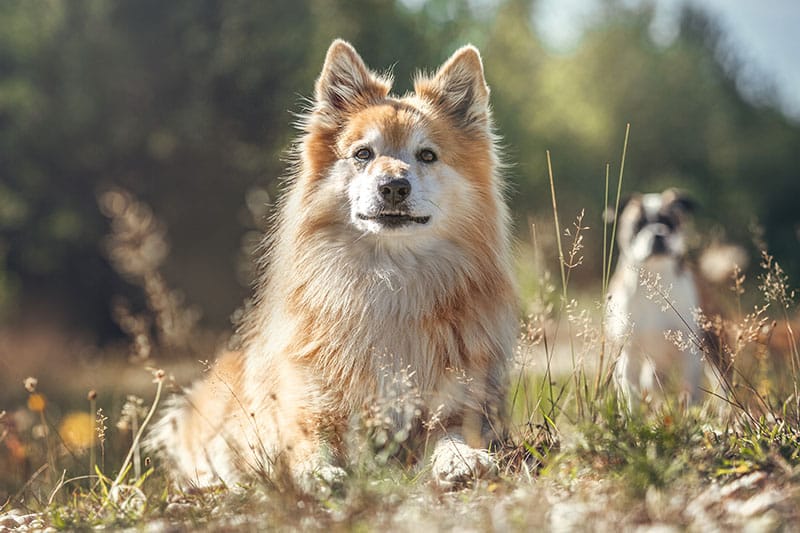

Things to Know When Owning an Icelandic Sheepdog
Food & Diet Requirements 🦴
If your Icelandic Sheepdog is healthy, they can eat any dog food formula produced by a high-quality brand as long as that formula fits your dog’s weight and age range (puppy, adult, or senior). On the other hand, if your dog has a health issue like, for example, obesity or joint problems, your vet may recommend a specific type of formula to help manage the condition.
In addition, some dogs have allergies and may not be able to consume formulas containing certain ingredients. Common allergens for dogs include proteins from beef, chicken, eggs, dairy products, wheat gluten, and soy.
Exercise 🐕
If you like the outdoors, you’re sure to get along well with an Icelandic Sheepdog as these dogs need quite a bit of exercise. Daily walks of a good length are essential, but Icelandic Sheepdogs are happy to do other activities, too, like hiking or just playing in the yard with you. They’re also good candidates for various events that require mind work as well as physicality, like herding, agility, and obedience events.
Training 🎾
The Icelandic Sheepdog’s intelligence and eagerness to please come in handy when it comes to training them to follow commands and even learn tricks. That said, if you’re not careful, your Icelandic Sheepdog could easily set their clever mind to more mischievous endeavors.
Opening cupboard doors to root for something tasty or wandering off to investigate something fascinating but forbidden are just a couple of the Icelandic Sheepdog’s potential “talents”, so keep an eye open. It’s also important to acclimate your dog to spending a healthy amount of time alone from a young age because Icelandic Sheepdogs are prone to separation anxiety.
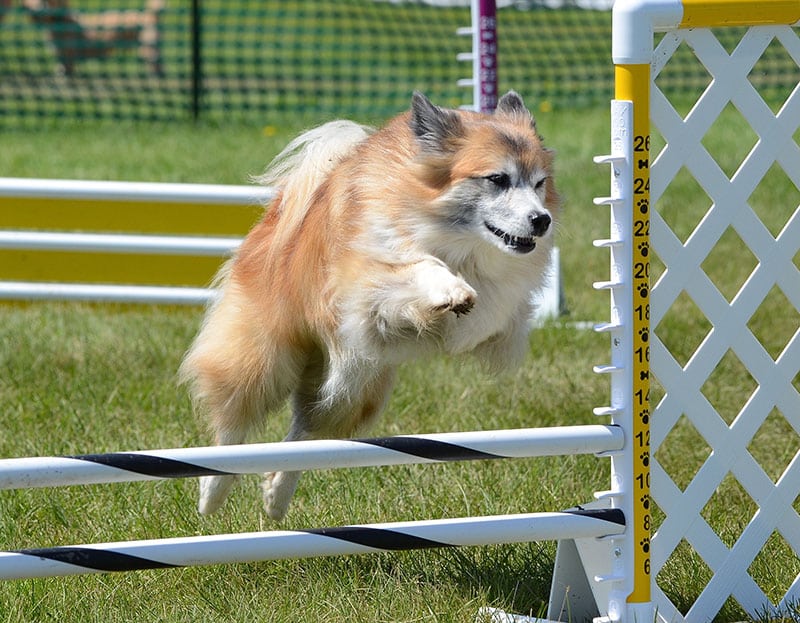
Grooming ✂️
Icelandic Sheepdogs are moderate shedders as a rule but they “blow” their double coats when spring and fall roll around. This means they’ll lose a great deal of undercoat hair, and this is normal during shedding seasons, so don’t be alarmed. You can use a deshedding tool to help you deal with all the fallout, but for the rest of the year, you can usually get away with brushing them once weekly.
Other aspects of care to take into consideration are daily tooth brushing, regular ear checks to make sure they’re not getting too dirty or are showing signs of infection, and occasional nail trimming when needed.
Health and Conditions 🏥
An Icelandic Sheepdog’s expected lifespan is around 12–14 years, which is pretty good compared to some other breeds. Some will even exceed this expectation. Nevertheless, all dogs have the potential to experience health conditions, and some are breed-specific. In the Icelandic Sheepdog’s case, hip dysplasia—this describes a loose joint in the hip socket—is one of the conditions they’re prone to.
Signs of hip dysplasia to be vigilant for include being less active, swaying or hopping, thigh muscle loss, hind leg lameness, pain, and stiffness. The Icelandic Sheepdog is also susceptible to the eye conditions listed below. In the case of distichiasis (extra eyelash growth), it can range from asymptomatic with no treatment required to severe (this can result in ulceration), which is why it’s listed in both categories.
- Asymptomatic distichiasis
- Hip dysplasia
- Cataracts
- Symptomatic distichiasis
Male vs Female
All dogs, whether male or female or whether or not they’re of a specific breed, have personality traits that make them unique. If you check out forums online, some dog parents make generalizations about male dog personalities and female dog personalities, but these are purely anecdotal. You’ll only know your dog’s individual personality by spending time with them.
However, both male and female dogs display certain behaviors at certain times when they haven’t been neutered (male) or spayed (female). If a female dog is not spayed, she goes into heat every six months or so (so this can vary), and heat-related behaviors include clinginess, irritability, frequent urination, mounting, and roaming.
Unneutered male dogs can be harder to manage when they sense a female in heat because they become more territorial (this includes scent marking) and determined to roam. Hormones are behind these behaviors.
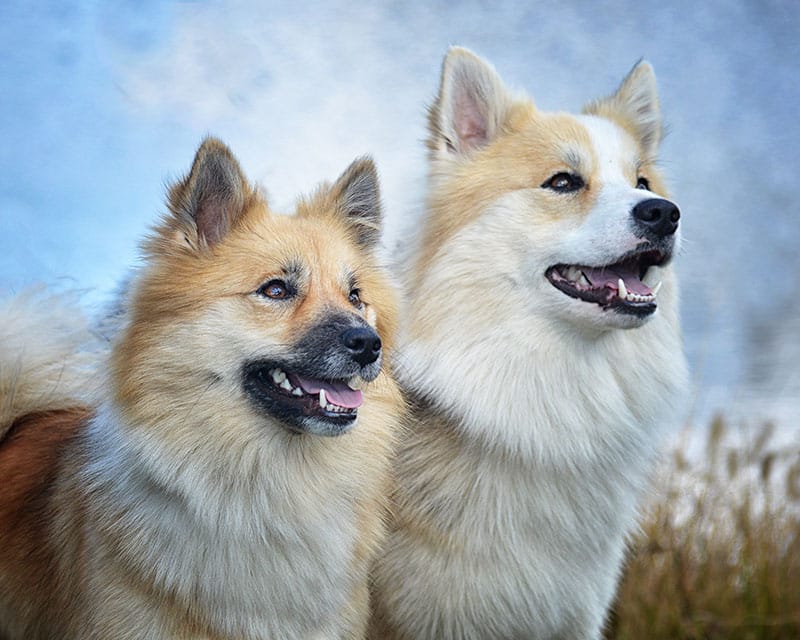

3 Little-Known Facts About the Icelandic Sheepdog
1. Icelandic Sheepdogs are One-of-a-Kind
Though plenty of breeds are native to Nordic countries, including the Norwegian Elkhound and the Finnish Lapphund, the Icelandic Sheepdog is the only one to hail from Iceland.
2. The AKC Only Recently Recognized the Icelandic Sheepdog
Despite the breed’s long history, the American Kennel Club only officially recognized the Icelandic Sheepdog in 2010.
3. Icelandic Sheepdogs Are the 132nd Most Popular Breed
The American Kennel Club’s popularity ranking places the Icelandic Sheepdog at number 132 out of 201 breeds. Just in front in 131st place is the Irish Terrier, and just behind in 133rd place is the Bluetick Coonhound.

Final Thoughts
The Icelandic Sheepdog makes the best companion, but even dogs are considered to be as trainable and easygoing as they require a great deal of commitment. Also, bear in mind that if you acquire an Icelandic Sheepdog from a breeder, you may be placed on a waiting list due to the breed’s rarity.
Featured Image Credit: Bildagentur Zoonar GmbH, Shutterstock
